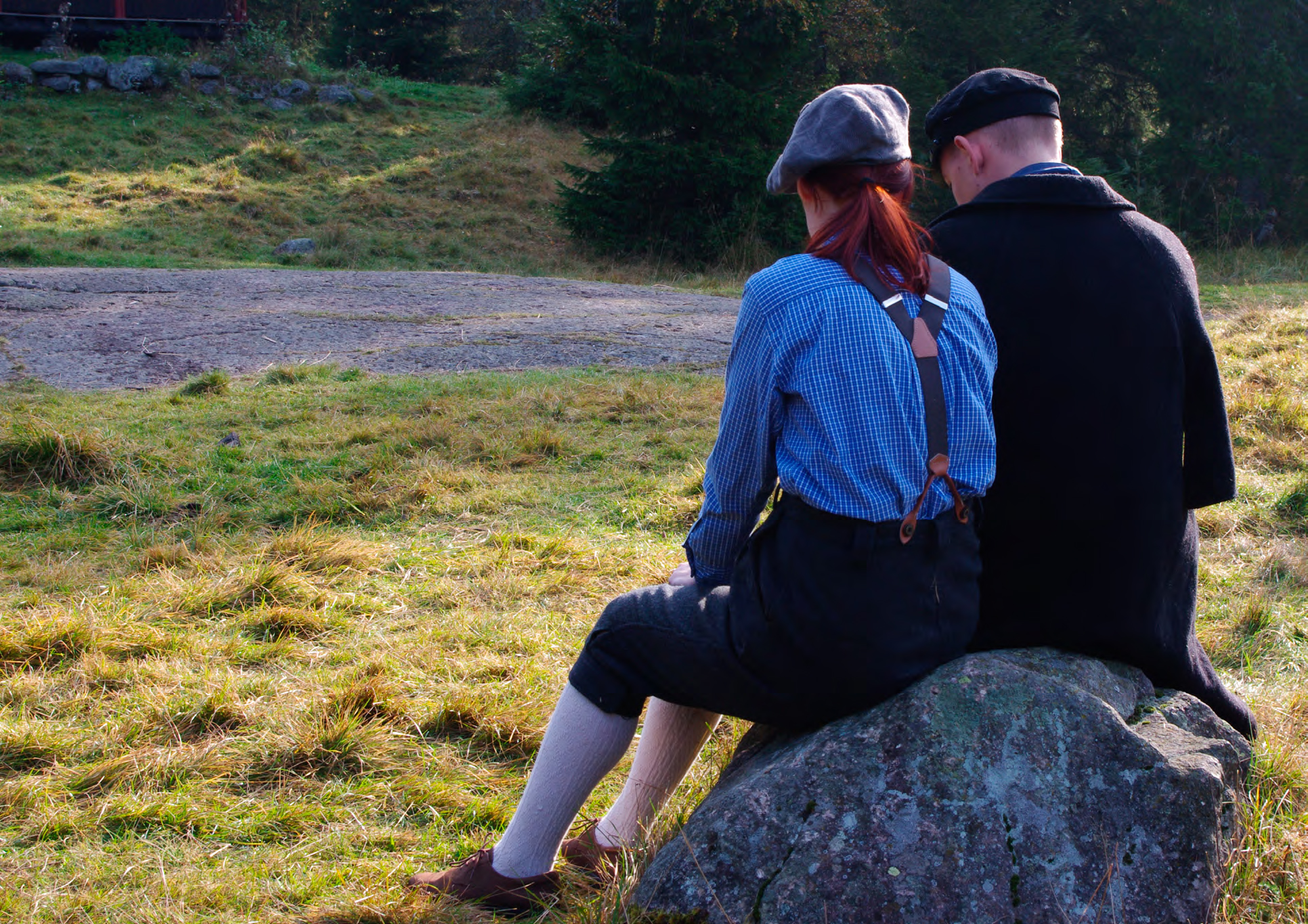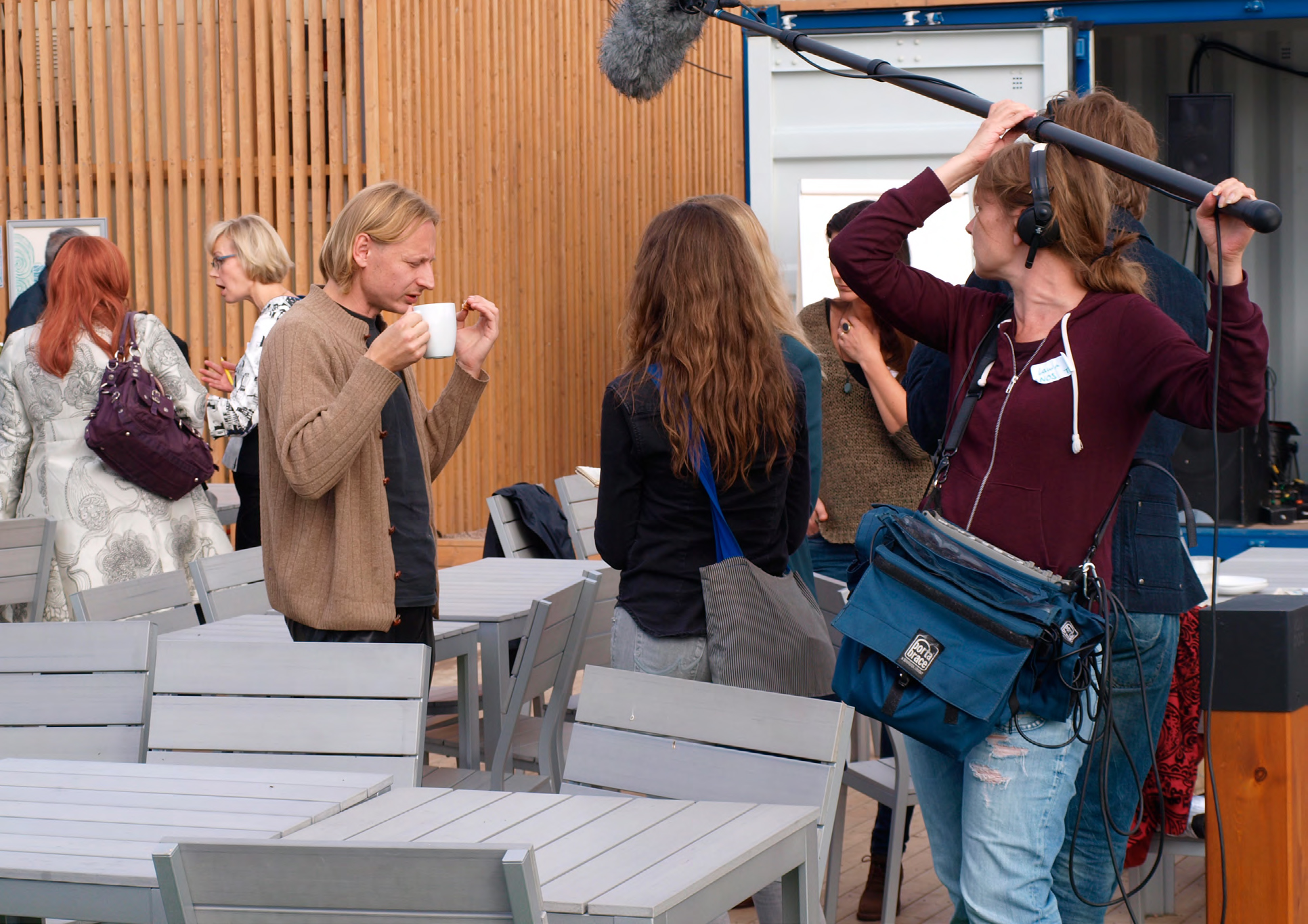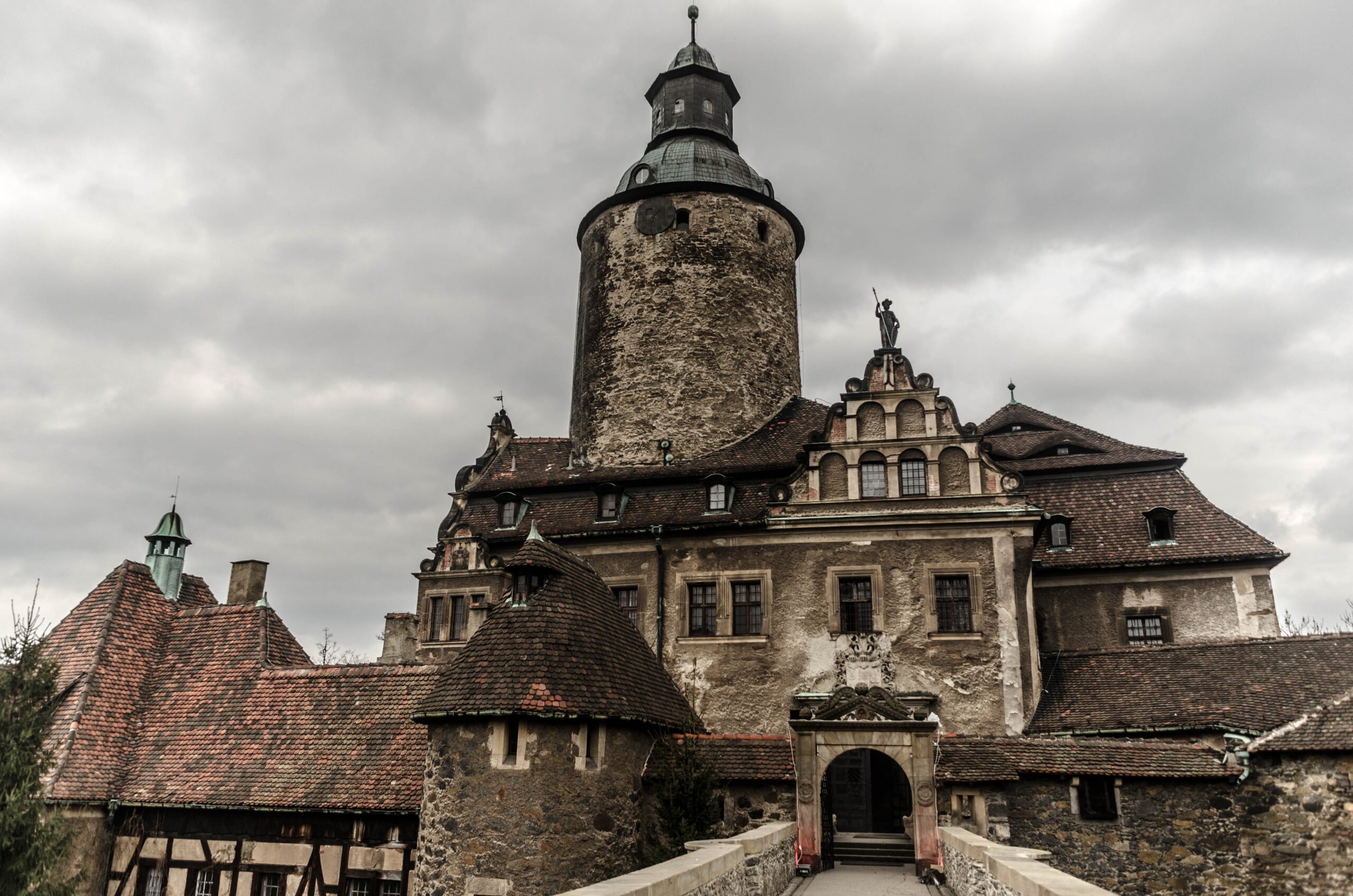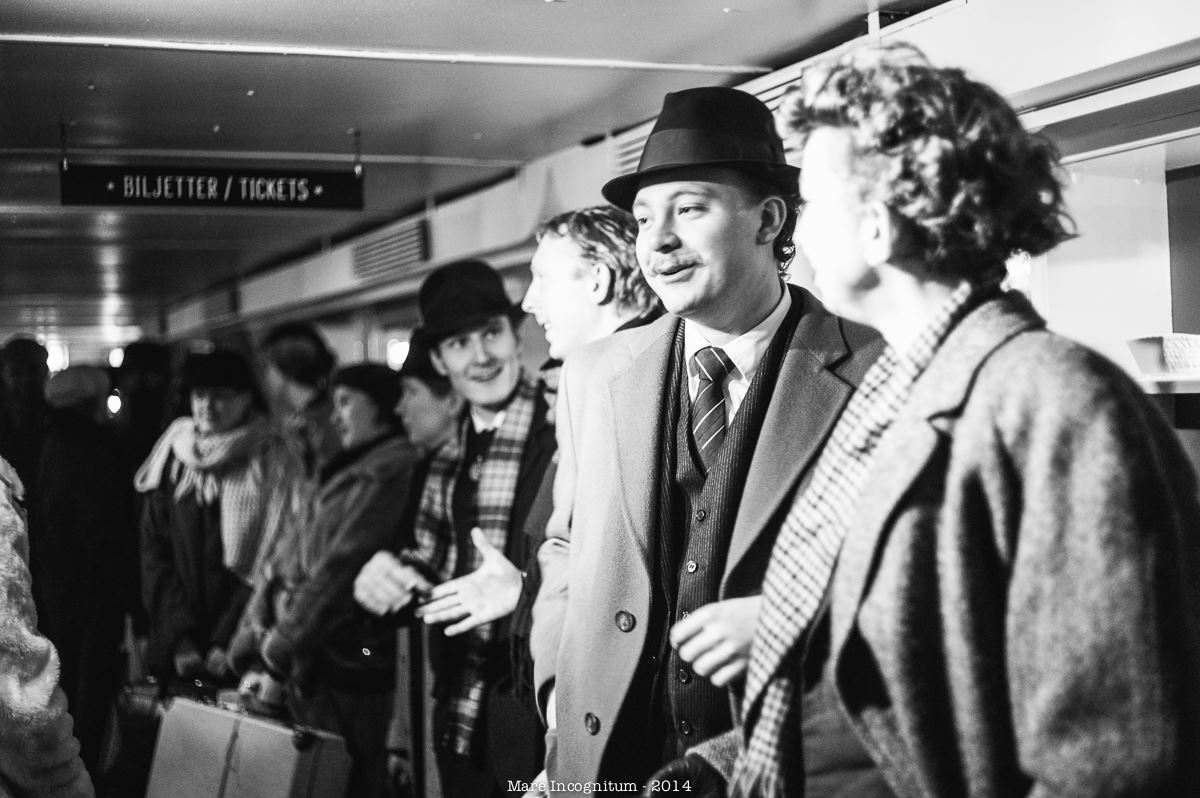In July of 2014 we invited 75 players from around the Nordic countries to a wilderness camp in Finnskogen, Norway, in order to give life to a fictive hunter-gatherer society. For four days and three nights they sang, slept, woke, wept, ate, drank, drummed, flirted, chanted, and performed the ceremonies as men, women and nuk of the Ankoi. They each have their own stories to tell – some contradictory, but all true. This is a designer’s story – a story about the why and the how of the larp “KoiKoi”.
The Ankoi
The Ankoi are a band society. Each band, (called a “Fam”) consists of 10-20 people, who move from camp to camp through a vast northern forest. Their life is nothing like ours. Their “fathers” are the brothers of their “mothers”, who in turn are the women who nursed them as children. They are surrounded by gods/spirits/presences called kwath, living in the stones and the forest and the winds. Their children have no gender, while their adults have three: women, men and nuknuk. A woman always gives birth alone in the wild, and a man cannot light fires, lest they draw the ire of angry kwath. They have no laws, no judges, and no prisons, regularly fighting each other over perceived insults. They kill strangers on sight.
Every two years, the whole people gather in the valley of Koi, center of their cultural life, to celebrate the feast of KoiKoi. The central rituals of the culture are performed here: rites of passage where children are accepted into a gender and adulthood, FamRit, where a person becomes a member of a different band, the rite of passing into old age, the rites that keep the sun shining and the winds blowing.
The Human Condition
This was not a fantasy larp. Neither was it historical. It was an attempt, for our part, to deal with the central events of human life: Cradle and grave. Relationship and separation. Growing old. Growing young. Being and belonging.
 To provide a vantage point on these themes we constructed the Ankoi as a mashup of traditions and ideas as alien from our own culture as possible, but still “authentic”: documented in history and anthropology. The result was a society far more complex than can be described here, but not one representative of any real hunter-gatherer society. These are quite diverse – the Inuit of the Arctic have less in common with the Umanikaina of New Guinea than Denmark has with North Korea.
To provide a vantage point on these themes we constructed the Ankoi as a mashup of traditions and ideas as alien from our own culture as possible, but still “authentic”: documented in history and anthropology. The result was a society far more complex than can be described here, but not one representative of any real hunter-gatherer society. These are quite diverse – the Inuit of the Arctic have less in common with the Umanikaina of New Guinea than Denmark has with North Korea.
A hunter-gatherer society opened aesthetic possibilities – facial painting, masks, rituals, storytelling, drums – that had been prominent in some Norwegian larps in the 90s, and that we wanted to bring back for a new generation of players to enjoy. When asked what K oiK oi would be about, our one-word answer was “Rituals!”.
Low Conflict, Slow Play
Our modern culture is steeped in a sense of urgency that infests even historical and fantasy larps with a relentless focus on Action! Conflict! Now! With K oiK oi our aim was different: Serenity. Reflection. Rythm. The joy of being alive.
Player feedback – generally ranging from the moderately positive to the euphoric – was not without critical points. But despite the lack of major conflicts and goals to drive the larp, none of the players seem to have been bored. As one player commented on the forum:
As no-one wore watches, and we were encouraged to play slowly, our experience of time changed. It felt like we had an ocean of time available. When was the last time I felt that way? Time was no longer fragmented into small chunks, but became a steady flow of change.
Another concluded: “The calm I found at KoiKoi will be with me for a long time.”
A Systemic Design
KoiKoi was a systemic larp design: we neither wrote individual characters and plots, nor did we spend time negotiating with players. A character was defined by two standard types, e.g. “The Best Lover” and “Afraid of the Dark”. In the sign-up form, players were asked which of the 40 types they were interested in playing. No two characters had the same combination of types.
 We encouraged players to sign up together, as fams. These groups, and the enthusiasts who initiated them, did a lot of work to coordinate practical and creative preparations, filling in the gaps between our types and real humans.
We encouraged players to sign up together, as fams. These groups, and the enthusiasts who initiated them, did a lot of work to coordinate practical and creative preparations, filling in the gaps between our types and real humans.
The culture served as the dramaturgical engine, designed to offer up meaningful play opportunities – transitions, relationships and choices – for every character. For young adults to find one or more lovers, and be accepted as members of the same fam. For older adults: to consider whether it was time to settle down at Koi as an Ald, an elder. For the elders: to consider whether your path was near its end. And for the children: to seek adulthood as a woman, a man, or a nuk.
Teaching through Language
We communicated all this by defining how the Ankoi talked about their world, hoping that players would internalize the culture that spoke this language and told these stories. We, obviously, could not make up and teach an entirely new language. Instead, we modified Norwegian (and Swedish and Danish) to create Språk, the Ankoi Language.
In Norwegian a woman is called a “Kvinne”. In Språk she is called “Kvinn”. In Norwegian, the plural – women – is “Kvinner”. In Språk, it is “KvinnKvinn”. Common words were reduced to their first syllable, and repeated to make a plural or an emphasis.
We thereby provided an easy-to-learn illusion of speaking a different language. It also meant that non-larpers overhearing statements like “meeting the nuknuk for some foodfood” thought the players had lost their marbles.
Here is a sample chapter of the main text – the Kulturkompendium – titled “Murder”:
Humans do not kill humans. Only beasts, and strangers.
I have heard that long ago,
a man killed a man in his own fam.
Then all understood that he was not a man. The man was dead.
And he who killed
was a wroth and jealous kwath.
This was difficult.
For the kwath continued to live with the fam
as if it was a man.
And fam asked an aldnuk for advice.
And the advice they were given, they followed. They shared no food with kwath
and told no stories to kwath.
And when kwath-that-pretended-to-be-a-man wanted to tell stories
no-one listened.
And so it walked away
over the river to the land of the strangers
and since then, no-one has heard of it.
 These texts were also distributed an audiobook, earning us accolades from busy, text-weary and reading-impaired larpers. Every larp should have an audiobook.
These texts were also distributed an audiobook, earning us accolades from busy, text-weary and reading-impaired larpers. Every larp should have an audiobook.
No KoiKoi text has a single author – we wrote collaboratively, online, constantly revising and adding to each others work. We also wrote some 30 myths and stories, and gave each player one, encouraging them to tell it at the larp. That wish was granted: not only did the players tell stories, they also invented new ones. By the end of K oiK oi, the Ankoi Literary Canon contained some 100-150 stories.
Our language-based approach worked very well for most things: The characters spoke Språk. They believed, intuitively, in signs and portents and taboos and kwath. Their social structure followed the intended “primal anarchism”, though with perhaps a bit too much attention given to the symbolic roles of Great Man and Great Woman in each fam, and the future-telling rites of the nuknuk.
Gender was tougher. Players easily picked up the notion of gender as (mostly) divorced from biological sex. One female-bodied character went from being a child to being a man at the larp, and was unambiguously accepted as such. But pairings tended towards monogamy and jokes were told based on the premise of “man who always hunts for the beautiful woman”, in direct contradiction of the cultur compendium. While the nuk’s social role (caretakers and shamans) was clear, their gender identity – their sense of self – was not. If you want to tinker with gender, we conclude, you’ll need plenty of workshop time.
A Ritual Dramaturgy
But this was a larp about rituals, right? Yes. Yes, it was. We had pre-scripted it to contain 1-2 major rituals (“Rit) each day, as well as innumerable smaller ones. Each rit was described through a minimalistic ritual “recipe”. Had the Christian Mass been described the same way, it would have been : “The priest distributes bread and wine, saying ‘this is the body of Christ, this is the blood of Christ’”. All the singing, prayers and cermons would have been left to improvisation.
 We used the workshops to practice such improvisation. The main element of ritual improv – a set of practices that have evolved over the years in the Oslo larp scene – is to cultivate an awareness of the people around you : to listen, sense, feel, and then to act in harmony. Rhythm, movement and chanting all contribute to synchronising people. On top of this, we introduced a system of hand-signs that would allow people to take, use and distribute leadership in the rituals.
We used the workshops to practice such improvisation. The main element of ritual improv – a set of practices that have evolved over the years in the Oslo larp scene – is to cultivate an awareness of the people around you : to listen, sense, feel, and then to act in harmony. Rhythm, movement and chanting all contribute to synchronising people. On top of this, we introduced a system of hand-signs that would allow people to take, use and distribute leadership in the rituals.
The ritual improv approach was also used when improvising music, of which there was plenty, and in our sex simulation technique.
Ankoi storytelling was both ritual-like and larp-like: the “audience” would chant along with the storyteller, and the storyteller could use hand-signs to call others to act as the characters of the story. This, we feel, was one of the most successful aspects of the larp design: storytelling became a constant activity, the thing you did when you had nothing else to do, and something some players wanted to continue doing after the larp had ended. Some of the pivotal moments of the larp occurred in the midst of improvised storytelling, as the stories told resonated with the lives of multiple characters and players.
Practical Production
One does not simply walk into Finnskogen. It is a vast wilderness – cold and wet, populated by swarms of meat-eating insects, far removed from the nearest hospital. Our pre-larp planning included contingency plans for bear attacks and the purchase of a defibrillator. Neither bear nor heart attacks occurred, but we waged constant war against the meat- eating insects. The location did not have enough buildings for all the fams, so a gang of heroic larpers volunteered to build additional buildings before the larp.
 The main hall, Koi, was transformed into a tribal gathering space by 20 meters of rough tapestry. The three ritual places posed a bigger challenge. We were helped by the large boulders giant kwath had thrown around the area. By decorating them in a mixture of clay and paint, and clearing the bush around, random forest locations were turned into sacred spaces. Each fam was responsible for outfitting their own camp and for most of the food they would need during the game. Observing players in their great costumes, their scenic campsites, preparing elaborate meals, singing, drumming and chanting, being Ankoi – this was our reward as organizers.
The main hall, Koi, was transformed into a tribal gathering space by 20 meters of rough tapestry. The three ritual places posed a bigger challenge. We were helped by the large boulders giant kwath had thrown around the area. By decorating them in a mixture of clay and paint, and clearing the bush around, random forest locations were turned into sacred spaces. Each fam was responsible for outfitting their own camp and for most of the food they would need during the game. Observing players in their great costumes, their scenic campsites, preparing elaborate meals, singing, drumming and chanting, being Ankoi – this was our reward as organizers.
Altogether, KoiKoi was – by the standards of Norwegian larp – a major production, nearly perfectly executed. Had it not been, these other stories could not have been told.
A Night of Death and Laughter
We close this organizers’ story by sharing a moment from another, a player’s story. Latter was an aldnuk, an elder nuk and shaman. In the ceremony of Dødrit, Latter was responsible for killing those deemed useless to society and ready to become forkwath, ancestor spirits:
Dødrit had finally come to an end.As always it had been a night filled with one feeling after another. Ebbe and Dugg had stopped being. Latter had strangled them. They were now forkwath. Walking with the other aldnuk towards Koi, Latter was still holding on to the two white ribbons. They heard singing from Koi. When they arrived Bris threw open the doors and they entered. As others danced around the bonfire in the centre of Koi, Latter sat down on the knees.
Sometimes bursting into sorrowful moans.The song in the room continued, but changed character.After a while the circle (on its own?) began chanting the names of the deceased: Ebbe, Dugg, Ebbe, Dugg, Ebbe, Dugg… The names of the two aldmen became a melody. Latter, the only ankoi who takes human lives, crept towards the fire on all fours. Screamed, and left.
Later that night, they sat by the fire at Boarfam. Told lighter stories. Were comforted by their old friend and lover, Wave. Joked. Laughed. Their face still painted with the death mask…
The three previous days had seen meditation, song, dance, love and birth. By this ritual murder, this final act of loss and cruelty, our tableau of the human condition was complete.
KoiKoi
Credits: Margrete Raaum (main organizer + producer), Eirik Fatland and Tor Kjetil Edland (main organizers). Trine Lise Lindahl (writing/concept), Martin Knutsen (production/scenography), Elin Nilsen and Jørn Slemdal (writers). Extended team: Fabe Dalen (costume), Ståle Johansen and Anders Ohlsson (practical), Gaffa Express, (building and derigging), Frode Pettersen and Ørnefam (building), Li Xin (props & photography).
Date: July 1-5, 2014
Location: Finnskogen, Norway
Length: 5 days (4 in-character)
Players: 75
Budget: €10,000
Participation Fee: €90 (€70 under 26)
Game Mechanics: Minimalist.
Website: http://koikoilaiv.org/
This article was initially published in The Nordic Larp Yearbook 2014 which was edited by Charles Bo Nielsen & Claus Raasted, published by Rollespilsakademiet and released as part of documentation for the Knudepunkt 2015 conference.
Cover photo: Forkwath (ancestral spirits) gathered around one of the sacred boulders. Each clay mask weighed 5kg. (Play, Li Xin). All other photos by Li Xin.
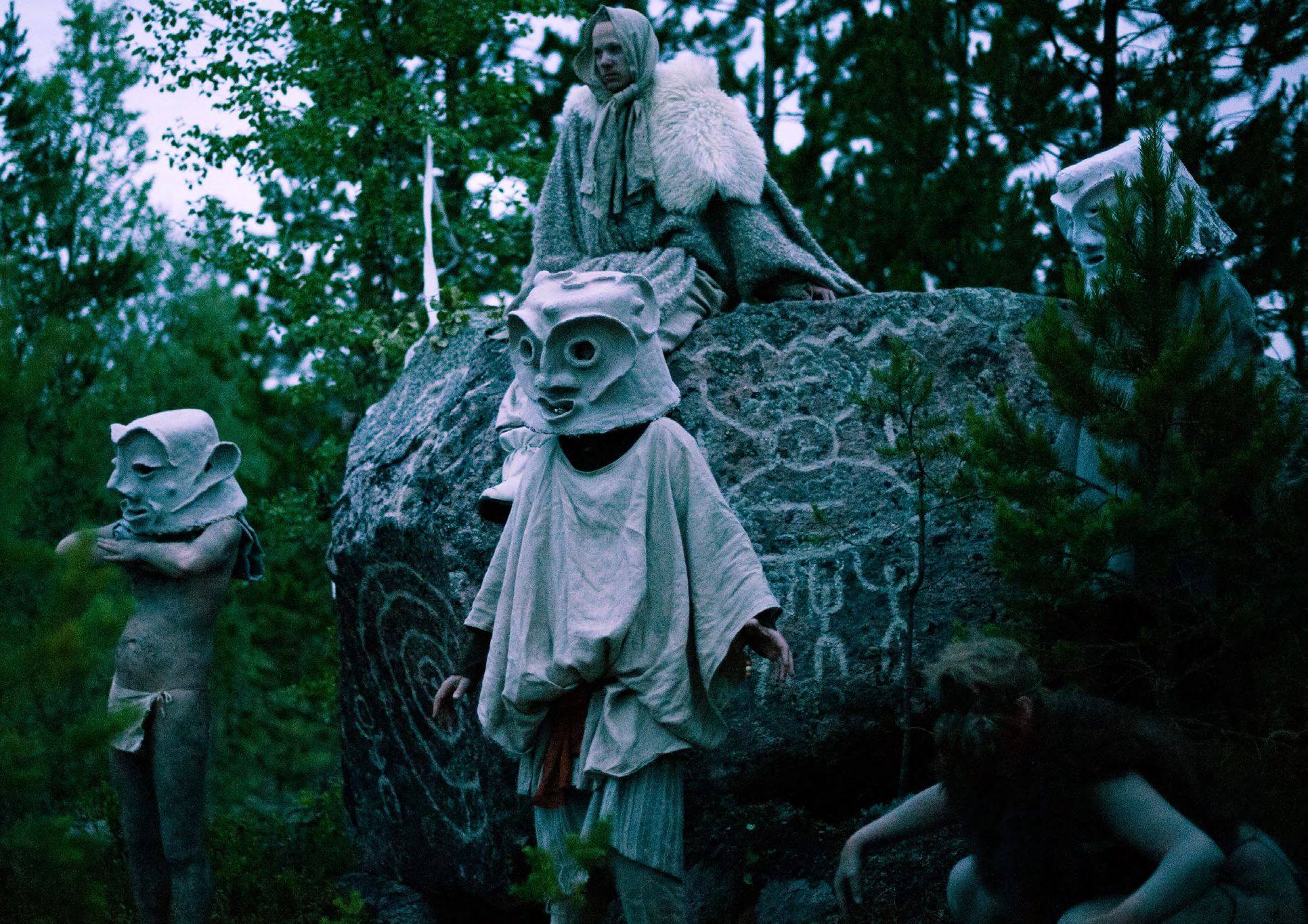
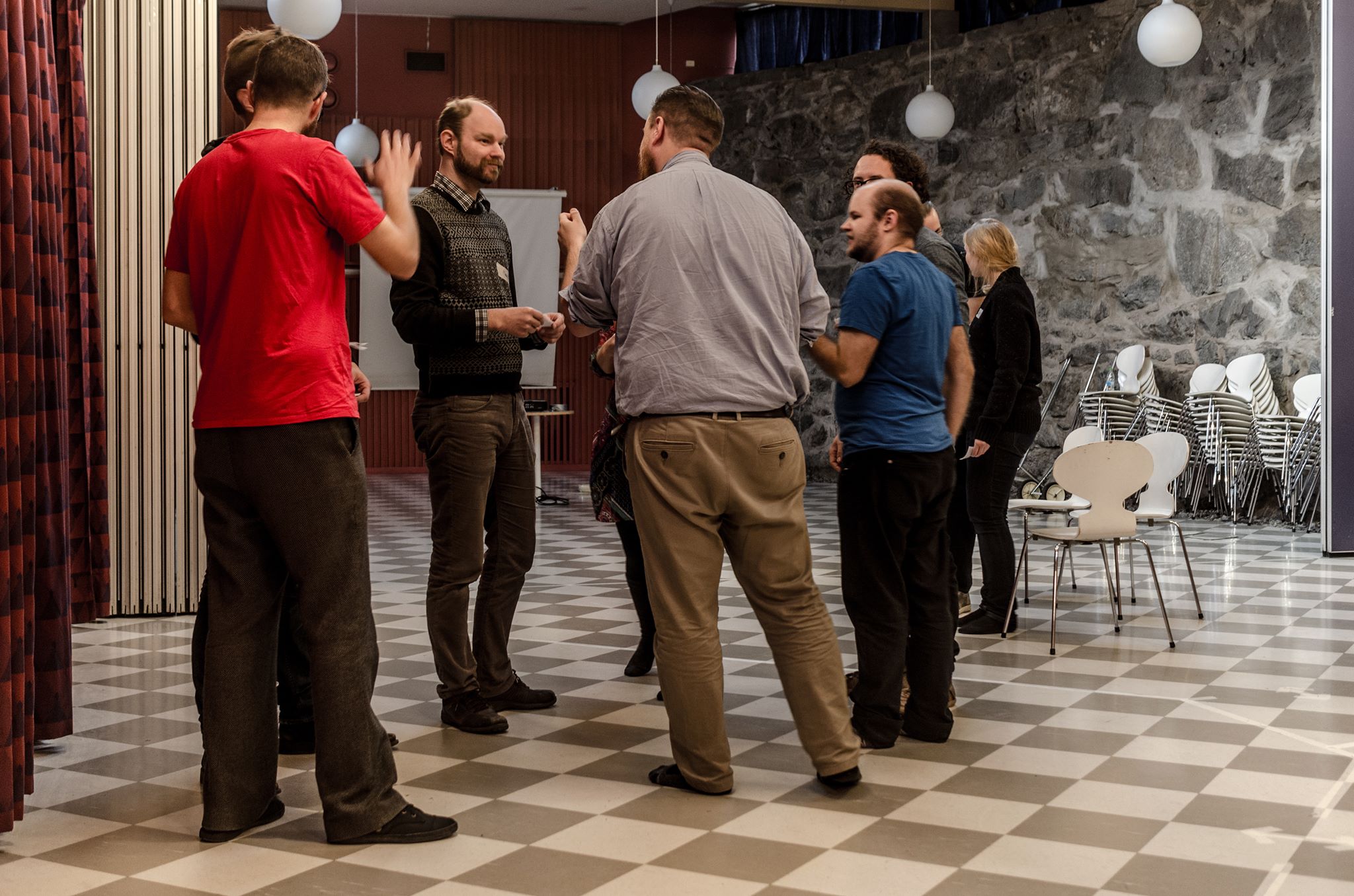

 The story started when the players awoke on Saturday morning and lasted until late in the afternoon on Sunday, after which there was some time for debriefing. Friday evening was spent socializing and doing some workshops, both for fleshing out character quirks and relationships and for communicating out of game fears and limits, since we know from experience these games can get pretty heated.
The story started when the players awoke on Saturday morning and lasted until late in the afternoon on Sunday, after which there was some time for debriefing. Friday evening was spent socializing and doing some workshops, both for fleshing out character quirks and relationships and for communicating out of game fears and limits, since we know from experience these games can get pretty heated.
 This time the players really went all out in including typical Sixties themes like the communist scare, emerging feminism and the American Dream. But there was also a lot of emphasis on more personal stories of addiction, betrayal, missed chances and shattered dreams. Some people had secrets as a family, others had deliberately kept things from their loved ones, like the mother in an upper class family who dabbled in witchcraft, or the young woman who had an affair with the man next door.
This time the players really went all out in including typical Sixties themes like the communist scare, emerging feminism and the American Dream. But there was also a lot of emphasis on more personal stories of addiction, betrayal, missed chances and shattered dreams. Some people had secrets as a family, others had deliberately kept things from their loved ones, like the mother in an upper class family who dabbled in witchcraft, or the young woman who had an affair with the man next door.


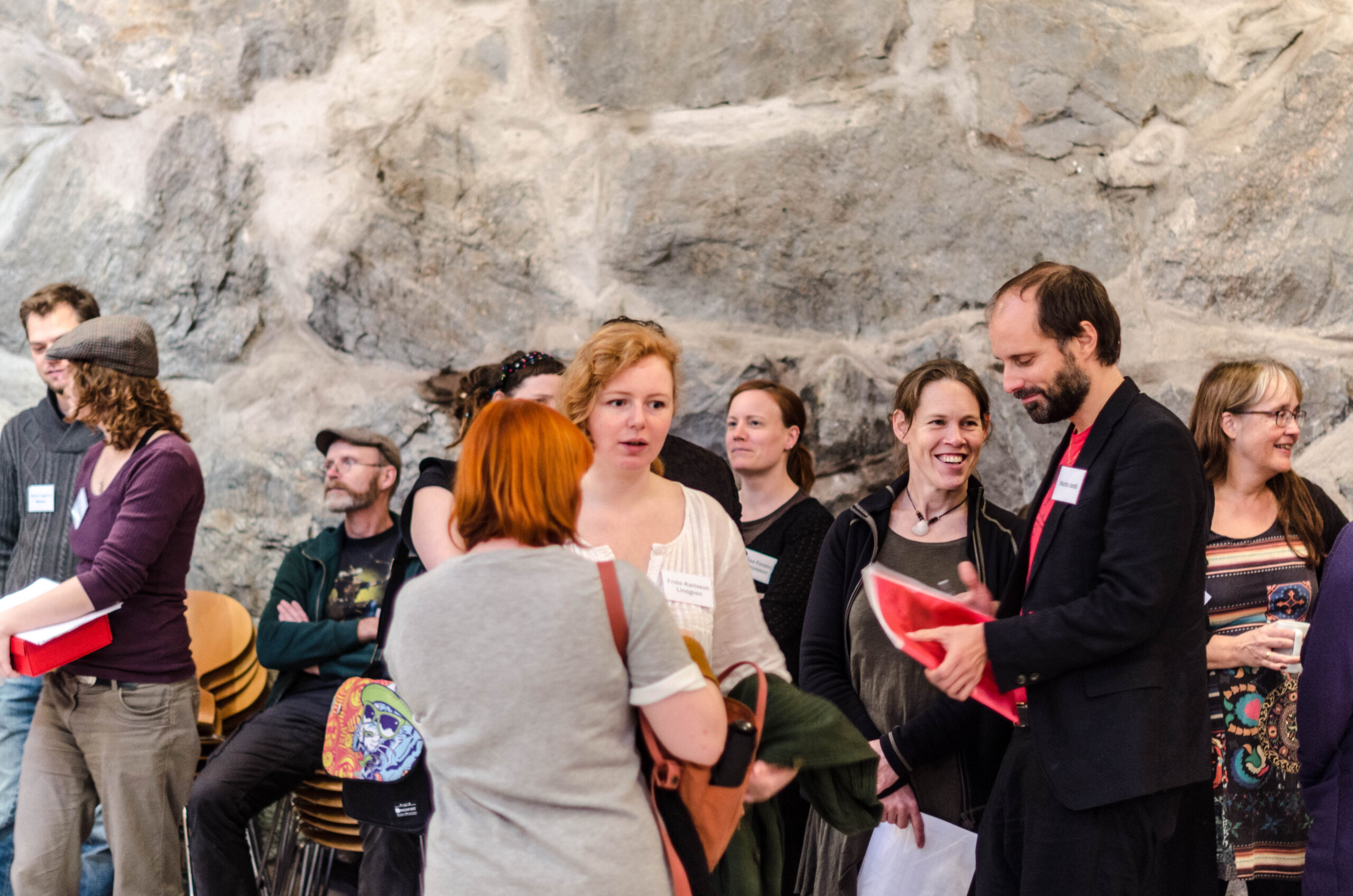
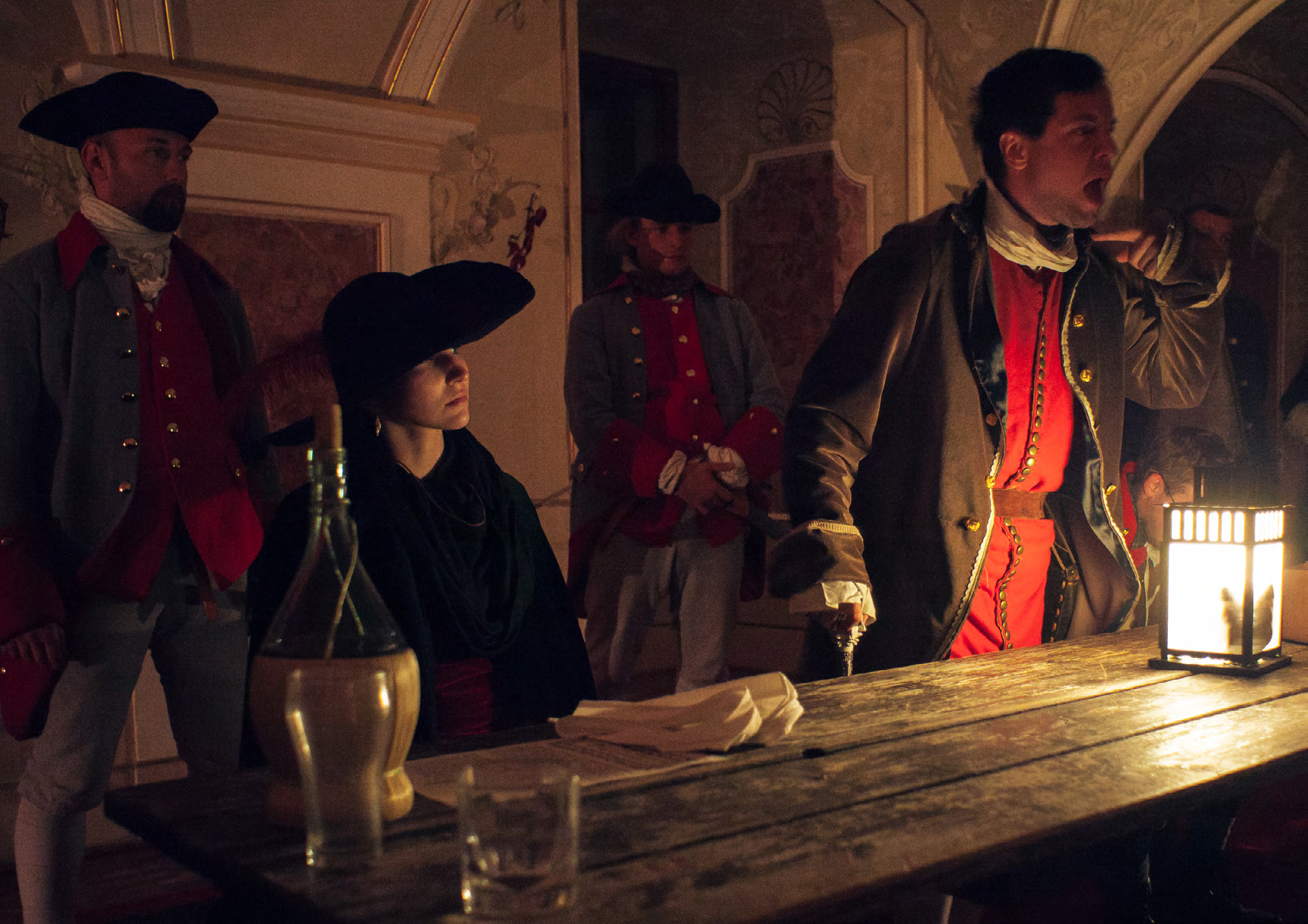




 These themes are especially strong with women, who for instance take a strong stance against their family and the demands that it places on them (e.g. an illegitimate daughter de Portefaix, hardly tolerated at the court), become significant moral authorities (e.g. Claire Gravois, a saint), or disturb the order of the society in general (e.g. the galley prisoners – it should be mentioned here, that the inner social order of the galleys includes two male prisoners, who are, however, at the bottom of the prison hierarchy).
These themes are especially strong with women, who for instance take a strong stance against their family and the demands that it places on them (e.g. an illegitimate daughter de Portefaix, hardly tolerated at the court), become significant moral authorities (e.g. Claire Gravois, a saint), or disturb the order of the society in general (e.g. the galley prisoners – it should be mentioned here, that the inner social order of the galleys includes two male prisoners, who are, however, at the bottom of the prison hierarchy).
